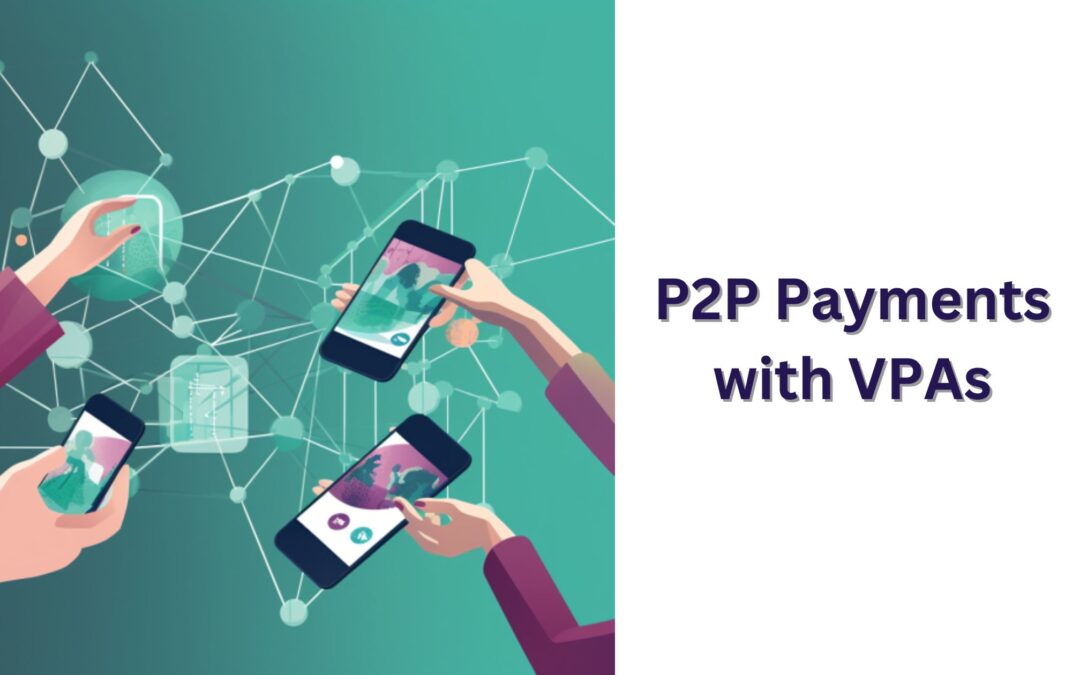In an increasingly digital world, the way we handle financial transactions has evolved dramatically. Peer-to-Peer Payments (P2P) have become a popular method for individuals to send money to each other seamlessly.
When combined with Virtual Payment Addresses (VPAs), these transactions become even more straightforward and secure. In this article, we’ll explore the world of P2P payments with VPAs, understanding how they work and the benefits they offer.
Understanding P2P Payments with VPAs
What Are P2P Payments?
P2P transactions refer to the process of transferring money directly from one individual to another, typically through digital means. It eliminates the need for physical cash and offers convenience, especially in today’s cashless society.
The Role of VPAs
Virtual Payment Addresses (VPAs) play a pivotal role in simplifying P2P transactions. VPAs are unique identifiers that act as substitutes for traditional bank account numbers. They enhance security by allowing individuals to send and receive money without revealing sensitive banking information.
How P2P Payments with VPAs Work
The process of conducting P2P transactions with VPAs is straightforward:
- Creating a VPA: To initiate P2P transactions, both parties need to have VPAs. They can create VPAs by linking their bank accounts to a digital payment platform or app. The VPA typically takes the format of “username@bankname.”
- Sharing VPAs: To send money, the payer needs to know the recipient’s VPA. Instead of sharing intricate bank details, they only need to share the recipient’s VPA.
- Initiating the Transaction: Using a digital payment app, the payer enters the recipient’s VPA, specifies the amount, and confirms the transaction.
- Authentication and Confirmation: Depending on the platform, the transaction may require authentication, such as a PIN or biometric verification, to ensure security.
- Completion of Transaction: Once authenticated, the transaction is processed. Funds are debited from the payer’s account and credited to the recipient’s account associated with the VPA.
Advantages of P2P Payments with VPAs
P2P payments with VPAs offer several advantages:
- Enhanced Security: VPAs reduce the risk of exposing sensitive banking details during transactions, enhancing security.
- Simplicity: The process is straightforward, eliminating the need for lengthy account numbers and complex codes.
- Speed: Transactions are often processed in real-time or with minimal delay, ensuring quick fund transfers.
- Convenience: Users can send money to family, friends, or even vendors with ease, using just the recipient’s VPA.
- Accessibility: P2P payments with VPAs can be initiated from the convenience of a smartphone or computer, making it accessible to a wide audience.
The Future of Digital Transactions
P2P payments with VPAs are at the forefront of the digital payment revolution. They offer a secure, convenient, and efficient way for individuals to manage their finances and exchange money. As technology continues to advance, and more individuals embrace digital payment solutions, P2P payments with VPAs will play an increasingly significant role in our daily lives.
In conclusion, P2P payments with VPAs provide a glimpse into the future of digital finance, where transactions are simplified, secure, and accessible to all. Embracing this technology can lead to a more seamless and efficient financial experience, ensuring that we stay connected in our cashless world.
P2P Payments with VPAs FAQs
What is a Peer-to-Peer (P2P) payment?
P2P payments involve the direct transfer of money from one individual to another, typically through digital means, without the involvement of traditional financial institutions.
What is a Virtual Payment Address (VPA)?
A VPA is a unique identifier that simplifies digital transactions. It acts as a substitute for traditional bank account numbers, enhancing security and convenience.
How do I create a Virtual Payment Address (VPA) for P2P payments?
To create a VPA, you typically need to download a digital payment app or platform, link your bank account, and choose a unique identifier (like a username) that becomes your VPA.
Can I use the same VPA for multiple P2P payment platforms?
The ability to use the same VPA on multiple platforms may vary by service provider. Some VPAs are specific to a particular platform or bank.
Are P2P payments with VPAs secure?
Yes, P2P transactions with VPAs are designed with security in mind. VPAs reduce the need to share sensitive bank account details, enhancing transaction security.
Are there transaction limits for P2P payments with VPAs?
Transaction limits may apply, depending on the service provider, user account type, and usage history. It’s advisable to check with your chosen platform for specific limits.
Can I use P2P payments with VPAs for international transactions?
The availability of P2P transactions with VPAs for international transactions may vary by region and service provider. Some platforms may offer international P2P transaction options.
What happens if I enter the wrong VPA during a P2P transaction?
It’s crucial to double-check the recipient’s VPA before initiating a transaction. If you enter the wrong VPA, the funds may be sent to the incorrect recipient. Contact the platform’s customer support for assistance if this occurs.

